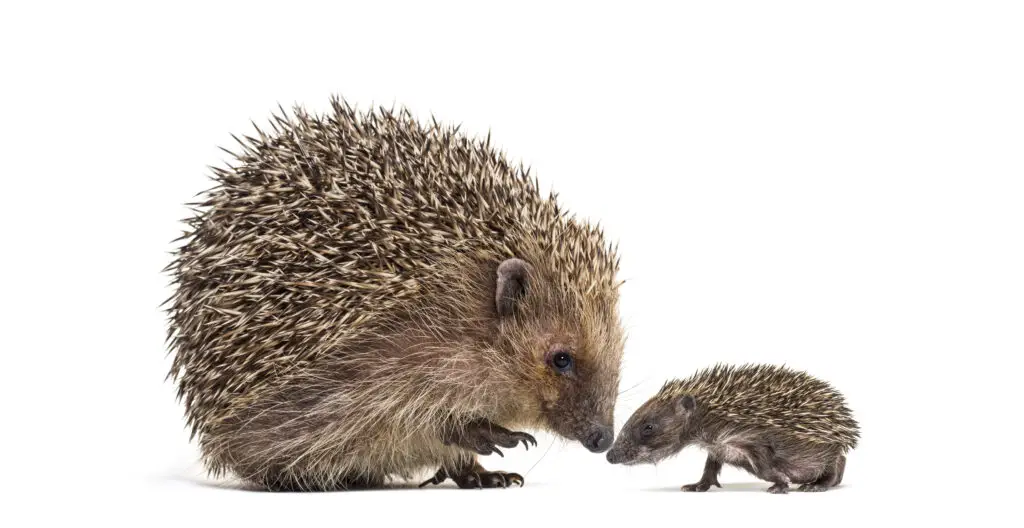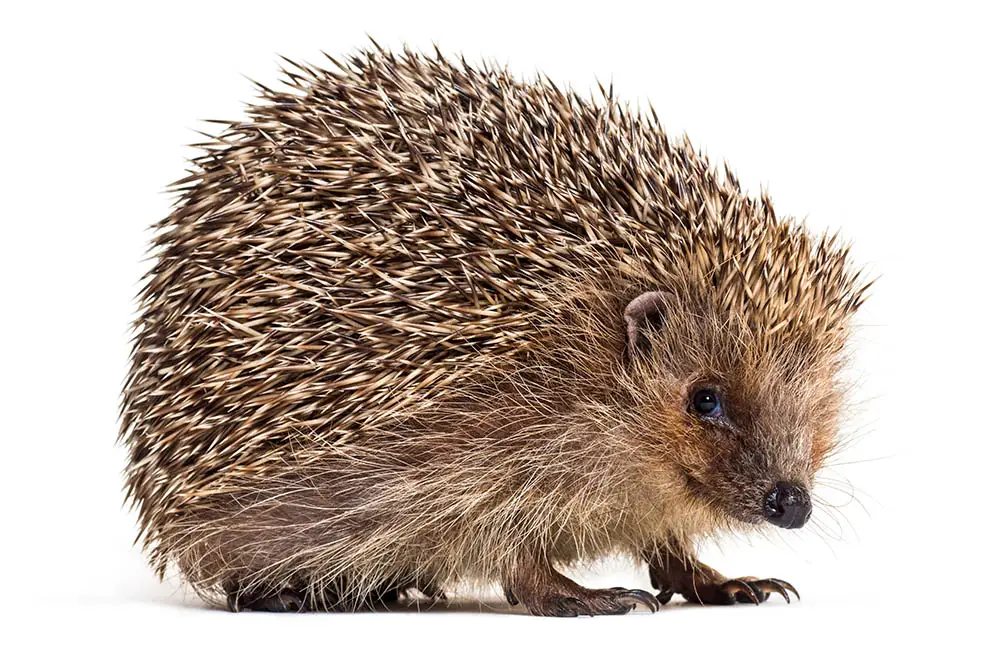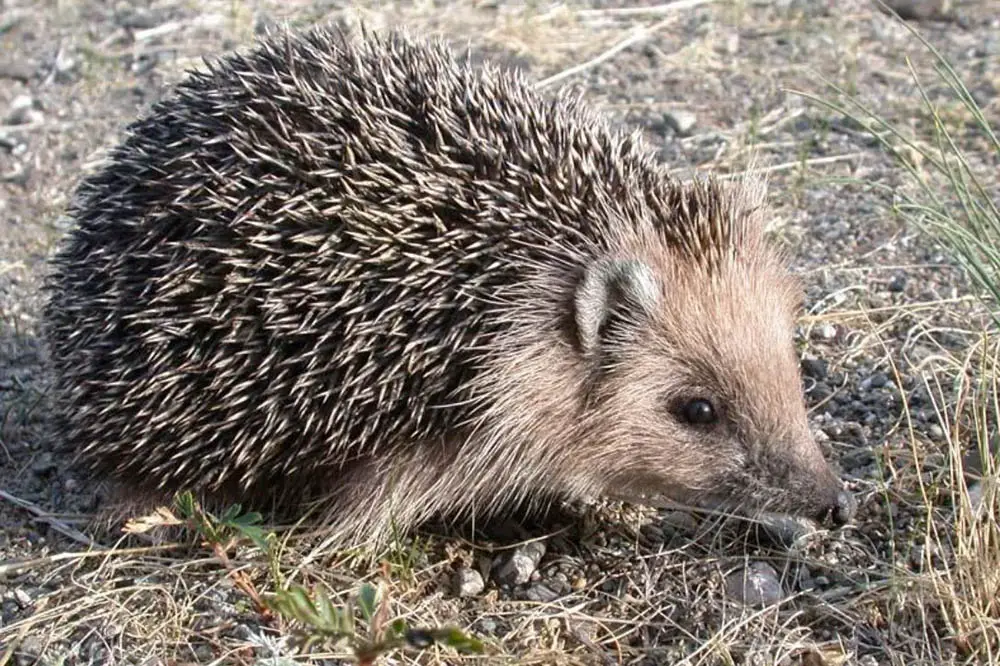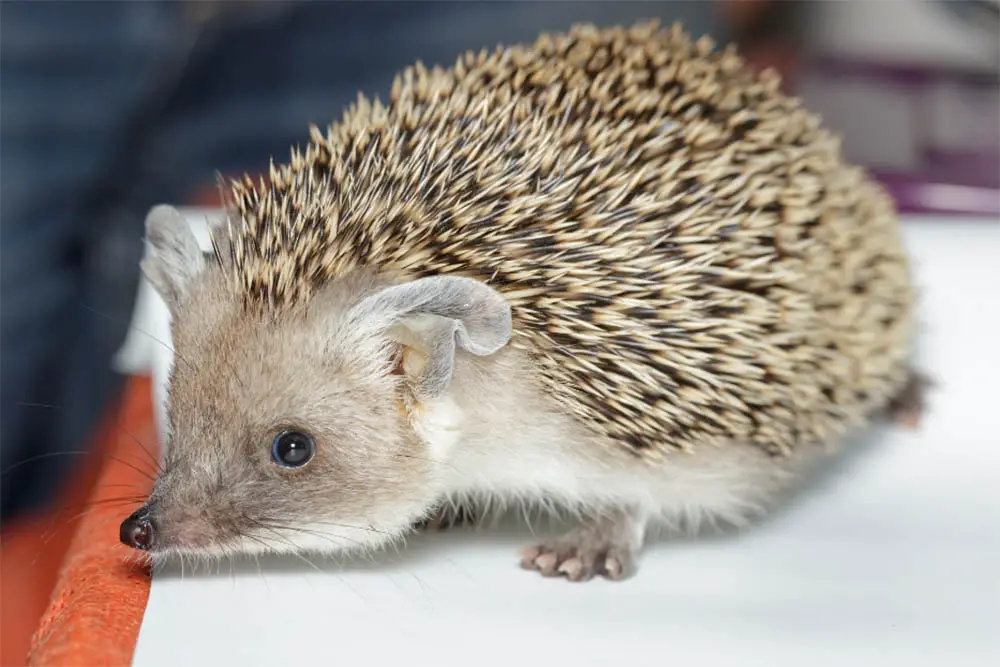
Quick Answer: To create a hedgehog friendly garden, provide shelter, avoid chemicals, ensure food and water access, and create hedgehog highways for safe movement.
Key Takeaways:
- Provide hedgehogs with a safe habitat by including hiding spots like logs and leaves, ensuring the garden is free of hazards such as open drains, and maintaining a diverse landscape with grass, shrubs, and flower beds to offer various foraging and nesting opportunities.
- Offer food and water by setting up feeding stations with appropriate hedgehog food, maintaining fresh water sources, and encouraging natural prey with a wildflower patch, while avoiding harmful chemicals and pesticides that can poison hedgehogs or their food sources.
- Create hedgehog highways with small gaps under fences to connect habitats, allowing hedgehogs to roam freely in search of food, mates, and nesting sites, and collaborate with neighbors to extend these wildlife corridors throughout the community.
Creating a Safe and Nurturing Habitat for Hedgehogs
Understanding Hedgehog Behavior and Natural Habitats
Hedgehogs are fascinating creatures with specific behaviors that are crucial to their survival. These small mammals are primarily nocturnal, meaning they are most active at night. During the day, they rest in hidden spots away from predators. Their diet mainly consists of insects, which they forage for under the cover of darkness. As the seasons change, hedgehogs enter a state of hibernation to conserve energy during colder months. To create a garden that feels like home for hedgehogs, it’s essential to replicate the natural habitats they are drawn to. This includes areas with plenty of ground cover and spaces to burrow for rest and protection.
The Essentials of a Hedgehog-Friendly Garden
A hedgehog-friendly garden is a place where these creatures can find food, shelter, and safety. To make your garden inviting, include hiding spots like logs, leaves, or specially designed hedgehog houses. These provide a safe place for hedgehogs to sleep and raise their young. Ensure your garden is free from hazards such as open drains or netting where hedgehogs could get trapped. A garden with diverse terrain, including a mix of grass, shrubs, and flower beds, offers hedgehogs various foraging and nesting opportunities. Striking a balance between a beautiful garden and a wildlife haven is key.
Designing Your Garden Layout with Hedgehogs in Mind
When planning your garden, think like a hedgehog. They need easy accessibility to move around in search of food and mates. Create natural pathways by leaving gaps under fences and designing borders that don’t block their way. Plant selection and garden structure should encourage hedgehogs to visit and stay. Opt for a mix of low bushes, ground cover, and access to water. Remember, a safe garden is one where hedgehogs can roam without encountering threats from pets or humans.
Selecting Plants And Flowers That Benefit Hedgehogs
Choosing the right plants can make all the difference for visiting hedgehogs. Go for varieties that attract insects, providing a natural food source. Plants like lavender, marjoram, and fuchsia are great for this. Avoid those that are harmful to hedgehogs or their prey. Emphasize native species to support the local ecosystem, which in turn benefits hedgehogs. These plants are more likely to thrive in your garden and require less maintenance, making them a win-win for you and the wildlife.
Avoiding Chemicals and Pesticides Harmful to Hedgehogs
The use of chemicals and pesticides can be detrimental to hedgehogs. These substances can poison hedgehogs directly or kill off their food sources. Instead, adopt organic gardening practices. Use natural pest control methods like encouraging predator insects or using barriers to protect plants. Composting and mulching are great ways to enrich the soil without chemicals. By doing so, you not only safeguard hedgehog health but also contribute to a healthier ecosystem for all wildlife.
Providing Shelter and Nesting Opportunities
Hedgehogs need cozy spots to rest, nest, and brave the cold during hibernation. A garden with ample shelter is a haven for these creatures. Let’s explore how to create the perfect hideaways that blend seamlessly with your garden’s design, ensuring safety from predators and a peaceful environment for hedgehogs.
Building or Buying a Suitable Hedgehog House
Whether you’re crafting a DIY hedgehog house or purchasing one, the key is to ensure it’s sturdy, weather-resistant, and spacious enough for a hedgehog to move around. Here’s what you need to know:
- Materials: Use untreated wood and avoid toxic paints or varnishes.
- Design: The entrance should be small to keep out predators, and the interior should be roomy.
For a store-bought house, look for these features and check for a design that allows for easy cleaning. Place the house in a quiet part of the garden, sheltered from wind and heavy rain.
The Importance of Leaf and Log Piles
Leaf and log piles are more than just garden waste; they’re a buffet and shelter for hedgehogs. To set them up:
- Assemble: Gather fallen leaves and logs in a corner of your garden.
- Position: Place them near hedges or shrubs for added cover.
These natural shelters are a hedgehog’s paradise, offering food and camouflage. They also enrich the soil and support other garden wildlife.
Creating a ‘Wild’ Corner for Hibernation and Nesting
A wild corner in your garden can be a lifesaver for hedgehogs. It’s a place where they can hibernate undisturbed and raise their young. To create this sanctuary:
- Vegetation: Plant native shrubs and let the grass grow tall.
- Management: Avoid tidying up too much and let nature take its course.
This untouched area not only benefits hedgehogs but also boosts your garden’s biodiversity.
Positioning Shelters to Protect from Predators
The right placement of shelters is crucial for hedgehog safety. Keep these tips in mind:
- Location: Tuck shelters away from foot traffic and noisy areas.
- Accessibility: Ensure there’s a clear path for hedgehogs to enter and exit.
To deter predators, use natural barriers like dense plants and avoid leaving out food that might attract them. A secure environment lets hedgehogs thrive without fear.
By providing these shelters and nesting opportunities, you’re not just decorating your garden; you’re giving hedgehogs a place to call home.
Ensuring Access to Food and Water
For hedgehogs to thrive in your garden, they need more than just shelter. Providing a steady supply of food and water is essential, especially in areas where their natural resources are scarce. Let’s explore how to set up your garden to meet these needs, ensuring your spiky visitors are well-fed and hydrated.
Setting Up Feeding Stations with Appropriate Food
Feeding stations are a great way to supplement the diet of hedgehogs. Here’s how to do it right:
- Choose a quiet spot in your garden to place the feeding station.
- Use shallow bowls that hedgehogs can easily access.
- Offer foods like tinned dog or cat food, cooked chicken (without bones), or specialist hedgehog food.
- Avoid foods like milk and bread, which are harmful to hedgehogs.
- Clean the feeding area regularly to prevent disease.
By providing a secure and hygienic feeding station, you’ll make your garden a go-to spot for hungry hedgehogs.
Maintaining a Fresh Water Supply
Water is just as important as food. To keep hedgehogs hydrated:
- Place shallow dishes of water around your garden.
- Change the water daily to keep it clean.
- If you have ponds or pools, create escape routes using stones or ramps to prevent drowning.
These simple steps ensure that hedgehogs can quench their thirst safely and continue their nightly patrols for food.
Encouraging Natural Prey with a Wildflower Patch
A wildflower patch does wonders for hedgehogs by attracting a buffet of natural prey. To create one:
- Select native wildflowers that are known to attract insects.
- Plant them in a sunny spot with well-drained soil.
- Allow the patch to grow without too much interference.
This patch will not only provide food for hedgehogs but also add beauty and biodiversity to your garden.
Compost Heaps as a Source of Natural Food
Compost heaps are a magnet for insects, making them perfect foraging grounds for hedgehogs. To maintain a hedgehog-friendly compost heap:
- Keep it in a quiet corner of your garden.
- Add garden waste like leaves and grass clippings regularly.
- Avoid using chemicals or adding meat scraps that can attract pests.
A well-maintained compost heap is a win-win, providing nutrients for your garden and a natural diner for your hedgehog guests.
Connecting Habitats with Hedgehog Highways
Hedgehogs are wanderers by nature, and their survival depends on the ability to roam freely in search of food, mates, and cozy nesting spots. That’s where hedgehog highways come into play. These wildlife corridors are vital for hedgehog conservation, allowing these small mammals to navigate urban landscapes where gardens are often enclosed by fences and walls.
The Importance of Garden Accessibility for Hedgehogs
Gardens are more than just patches of greenery; they’re potential lifelines for hedgehogs. To thrive, hedgehogs need to:
- Find diverse food sources: A single garden may not provide enough sustenance.
- Locate mates: Hedgehogs require access to a larger population for breeding.
- Discover safe nesting sites: Hedgehogs need multiple options to find the perfect spot to raise their young.
Creating small gaps or tunnels under fences or through walls can make a huge difference. These passageways should respect homeowners’ needs for privacy and security while offering hedgehogs the pathways they desperately need.
How to Create Hedgehog Highways and Passageways
Building a hedgehog highway is simple and rewarding. Here’s how to get started:
- Measure up: A 13cm by 13cm (5-inch by 5-inch) gap is enough for a hedgehog but too small for most pets.
- Choose materials: Use sturdy materials that blend with your garden’s aesthetic.
- Pick the right spot: Place the entrance away from busy roads and potential hazards.
By connecting your garden with others, you contribute to a larger community network that supports hedgehog populations.
Collaborating with Neighbors to Extend Hedgehog Habitats
Extending hedgehog habitats beyond your garden requires a community effort. Here’s how to encourage neighborhood collaboration:
- Start a conversation: Share the benefits of hedgehog conservation with your neighbors.
- Educate: Offer information on how simple changes can make a big impact.
- Organize: Consider community initiatives like hedgehog mapping or group building days for highways.
Successful community initiatives have shown that when neighbors work together, hedgehog numbers can flourish. By fostering these connections, you’re not just helping hedgehogs; you’re building a stronger, more environmentally conscious community.
Protecting Hedgehogs from Common Dangers
Hedgehogs are not only adorable but also vulnerable, and our gardens can be full of hidden dangers. As gardeners, it’s our responsibility to ensure that these little creatures are safe as they go about their nightly foraging. Let’s look at how we can identify and mitigate common risks to make our gardens a sanctuary for hedgehogs.
Identifying and Removing Garden Hazards
Several common garden features can pose serious threats to hedgehogs:
- Netting: Can entangle hedgehogs. Use it sparingly and keep it taut or above ground level.
- Open drains: A potential trap. Cover them securely.
- Pesticides: Can poison hedgehogs. Opt for natural pest control methods.
Conducting regular checks helps to spot and address new hazards, ensuring a hazard-free zone for our spiky friends.
Pet-Proofing Your Garden to Prevent Hedgehog Harm
Pets, especially dogs and cats, can inadvertently harm hedgehogs. To prevent this:
- Train your pets: Teach them to be gentle with wildlife.
- Secure your garden: Ensure pets can’t chase hedgehogs into unsafe areas.
- Supervise outdoor time: Keep an eye on interactions between your pets and hedgehogs.
With these measures, pets and hedgehogs can coexist peacefully in your garden.
Implementing Safe Gardening Practices to Support Hedgehog Welfare
Safe gardening practices are essential for protecting hedgehogs:
- Be cautious with lawn equipment: Check for hedgehogs before mowing or strimming.
- Dispose of litter and garden waste properly: These can become traps or hiding spots for pests.
- Create a natural garden: The less interference, the safer it is for hedgehogs.
Adopting these habits benefits not only hedgehogs but all garden wildlife, contributing to a healthier environment.
Frequently Asked Questions
Question 1:
How can I tell if hedgehogs are using the shelters I’ve provided in my garden? Answer: Look for signs like droppings, footprints, or nesting materials. Hedgehogs may also leave behind a distinctive, musky odor in their shelters.
Question 2:
What should I do if I find a hedgehog out during the day? Answer: Hedgehogs are nocturnal, so daytime activity might indicate distress. Contact a local wildlife rescue for advice.
Question 3:
Can I use mulch in my garden, and is it safe for hedgehogs? Answer: Yes, mulch is safe and beneficial for hedgehogs as it attracts insects and provides cover. Use organic, pesticide-free mulch.
Question 4:
How do I maintain a hedgehog-friendly pond in my garden? Answer: Ensure the pond has shallow edges or a ramp to allow hedgehogs to climb out easily, preventing drowning.
Question 5:
Are there any specific colors or types of flowers I should avoid planting for hedgehog safety? Answer: Avoid plants that are toxic to hedgehogs, like foxglove and azalea. Stick to native, non-toxic species to ensure safety.








